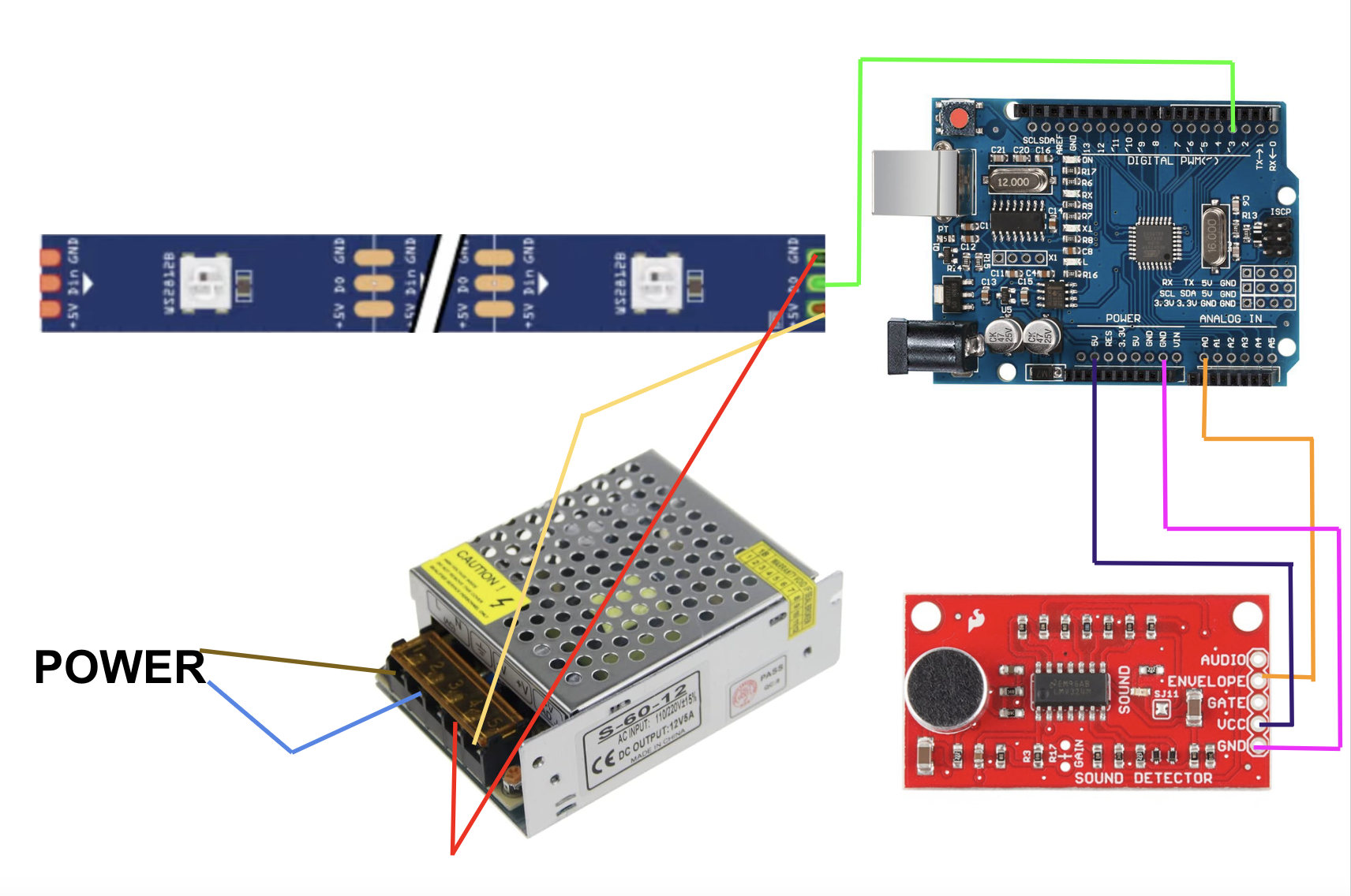Utilizing Arduino as the brain, this product transforms auditory rhythms into a visual spectacle through music-reactive LED strip lights. Crafted with meticulous coding for precise light responses, adept soldering to forge the circuit's backbone, and innovative 3D printing to encase the electronics in a custom-designed, aesthetically pleasing housing, this product offers an immersive experience. It blends sight and sound, inviting the audience into a world where music is seen as vividly as it is heard.
Regardless of the genre of music, this music-reactive LED strip will react to the bass, beat, and lyrics to a song. With a 5-meter long 12V WS2811 LED strip, a 12V 5A AC DC converter was used to power the LED lights. To optimize users' experience, the code offers two styles of the LED lights reacting. The first style is "linear-reactive" where the lights are already lit up from one side and builds up to the other side based on how loud the bass/beat/lyrics are. The second style is "brightness-reactive" where the lights are all lit up but will shine brighter depending on how loud the bass/beat/lyrics are.
Just plug in your AC DC converter to a power source and connect your Arduino Uno to the LED strip & sound detector... you can enjoy this music-reactive LED strip and decorate it anywhere in your room!



_ztBMuBhMHo.jpg?auto=compress%2Cformat&w=48&h=48&fit=fill&bg=ffffff)











_3u05Tpwasz.png?auto=compress%2Cformat&w=40&h=40&fit=fillmax&bg=fff&dpr=2)
Comments
Please log in or sign up to comment.